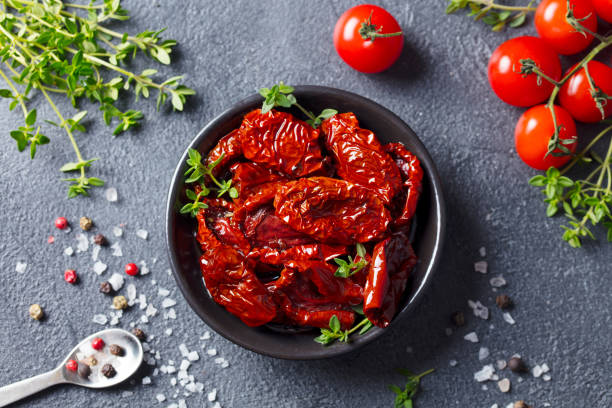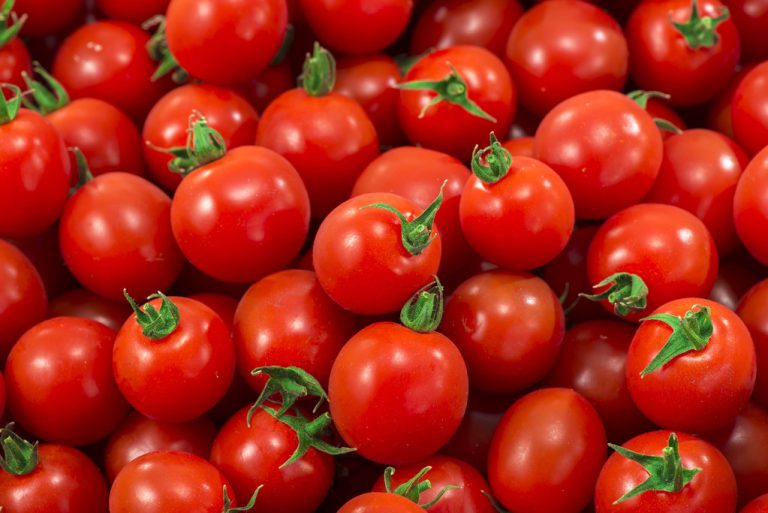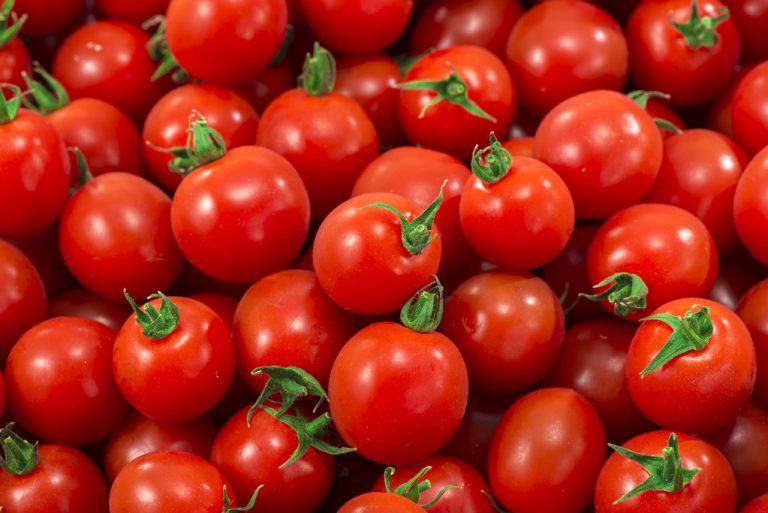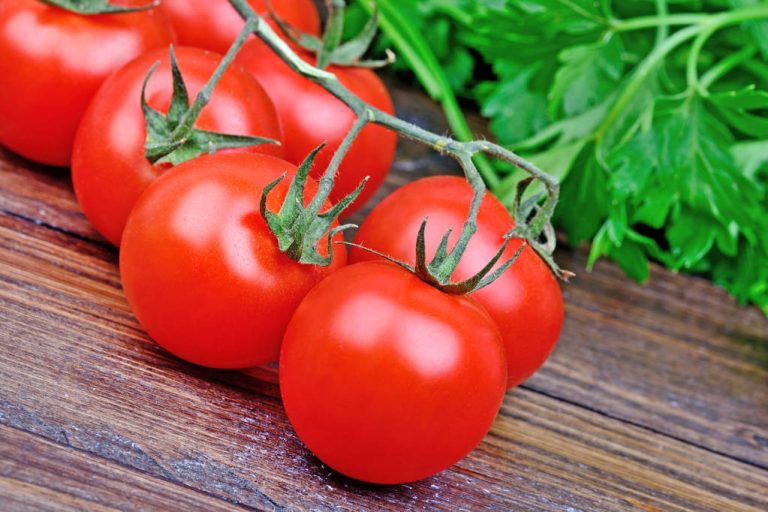Tomatoes should not be missing in any kitchen, especially in summer. To keep them fresh and tasty for as long as possible, it is important to store tomatoes correctly. We tell you what you should pay attention to.
Tomatoes are sensitive fruits when it comes to storage: they don’t like refrigerators, but they don’t like too much heat either, and they prefer to spend their time away from other fruits and vegetables. Storing tomatoes correctly not only affects their shelf life, but also their taste, because tomatoes that are harvested unripe continue to ripen in storage. Preparation for storage also plays an important role.
Depending on the variety, tomatoes can be kept for up to 14 days under optimal conditions.

How to prepare tomatoes for storage
Even before the actual storage, you can pay attention to certain things that will ensure that your tomatoes stay fresh for a long time.
If you harvest your own tomatoes, you should first harvest them with the stalks and blossom ends and do not remove them even if they have dried up. The green provides the tomatoes with nutrients even after they have been picked.
The following applies to both self-harvested and purchased tomatoes: it is better not to wash them before storing them. When washed tomatoes go into storage, any moisture left behind can quickly lead to mold growth. Overripe tomatoes, on the other hand, burst easily when pressure is applied to them during washing. Therefore: It is better to wash them just before you eat the tomatoes.
Store tomatoes correctly: It depends on the temperature and location
If you want your tomatoes to last as long as possible, the right temperature plays an important role. So the most important thing first: Tomatoes don’t belong in the fridge. This place is the worst imaginable for storing tomatoes. They react sensitively to cold, which means they lose their taste and acquire a floury consistency. In addition, their vitamin content is reduced by the cold temperatures.
But even an environment that is too warm is not good for the harvested tomatoes when they are already ripe. It causes tomatoes to continue to ripen and can therefore rot quickly.
Tomatoes feel best when they
at room temperature
in an airy but dark or shady place
be stored. A simple shelf or the kitchen table is therefore a suitable place to store tomatoes.
Tip for unripe tomatoes: If you want to let unripe tomatoes ripen, you can put them in a slightly warmer place, for example on a sunlit windowsill. Because the higher temperatures accelerate the post-ripening process.
Store tomatoes correctly: Better without neighbors
Another important point is that it is best to store the fruit separately from other fruits and vegetables. Ripe tomatoes emit ethylene, a gaseous plant hormone that stimulates nearby fruit and vegetables to ripen faster—and possibly rot as a result.
Other fruit and vegetables also emit the ripening gas, which means that tomatoes in turn ripen faster – and possibly go bad.
Fruits and vegetables you should keep separate from include tomatoes
Apples, bananas, pears, apricots
Cucumbers, peppers, hot peppers.
Tip for unripe tomatoes: You can of course take advantage of the effects of ethylene if you want to ripen unripe tomatoes faster. Then just store them with these other fruits and vegetables. After a few days, the tomatoes will have ripened and should then be stored separately.
Store tomatoes correctly: the right container
Many tomatoes from the supermarket come sealed in plastic. However, the fruit does not get enough oxygen in it and therefore rots faster. It is therefore better to buy tomatoes without plastic packaging from the start, so you are also doing something good for the environment.
Tomatoes prefer it airy. Therefore, place them in an open container, such as a bowl, basket, storage box without a lid, or on a plate. Baskets work particularly well if they are made of woven straw or metal struts, as this allows for good ventilation.
To prevent the tomatoes from bruising, you can line the container with a clean kitchen towel beforehand.

















